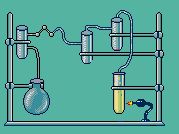MGX Minerals (MGX.C) has made another significant move in its quest to bring the resource sector into 21st century when the Canadian miner provided further details on its lithium extraction heavy oil waste water announced January 3rd.
The news concerned an update on research and development regarding the company’s work with PurLucid Treatment Solutions and the Saskatchewan Research Council (SRC).
According to the release, PurLucid is working to integrate respective technologies and build an optimized pilot plant for deployment into Alberta’s oilfields shortly.
In fact, MGX has already inked testing and analysis agreements with eight major and mid-tier operators, this is all with the intent of building multiple pilot plant and small commercial unit throughout 2017.
All of this is part of the company’s larger mandate of deploying throughout the Province of Alberta. Considering the province pumps out 526,716 barrels of conventional oil a day, not a bad place to set up shop.
Company President and CEO, Jared Lazerson, commented, “We are highly encouraged as we continue to analyze the initial results and achieve steady progress in optimization of the pilot plant. This may prove to be one of the most important developments in the energy industry since the commercial development of shale oil.”
Lazerson is right, marrying the new energy movement with classic resource extraction would put MGX Minerals at the front of the pack. So just what is the potential of this new-found source of lithium?
According to Lazerson, “It is an amazing twist of fate that the largest existing production of lithium brine on a daily basis is coming from oil wells. Millions and millions of barrels of lithium brine bearing water are being produced every day in North America and MGX is committed to rapidly deploying and harnessing this vast petrolithium resource.”
Currently MGX is the largest holder of mineral permits covering known lithium-bearing brine areas in Canada with a total land package of approximately 500,000 hectares.
MGX Minerals’ patented proprietary extraction process was used on a representative sample of heavy oil evaporator blowdown wastewater containing anomalous amounts of lithium grading 87 mg/L and even though the treatment is still in its testing and optimization stages, it achieved a lithium recovery rate of 40% and was able to remove all suspended solids, including 99.7% hydrocarbons and 99.9% of silica and other scale-forming minerals.
The company continues perform optimization testing using oil well wastewater from its Sturgeon Lake Project versus oil sands wastewater. Oil sands wastewater carrying a significant environmental revenue that would more than offset the front-end recovery losses. As such, the company is working to optimize capital and operating costs as well as maximizing the economic impact of by-products including sodium chloride and calcium chloride.

